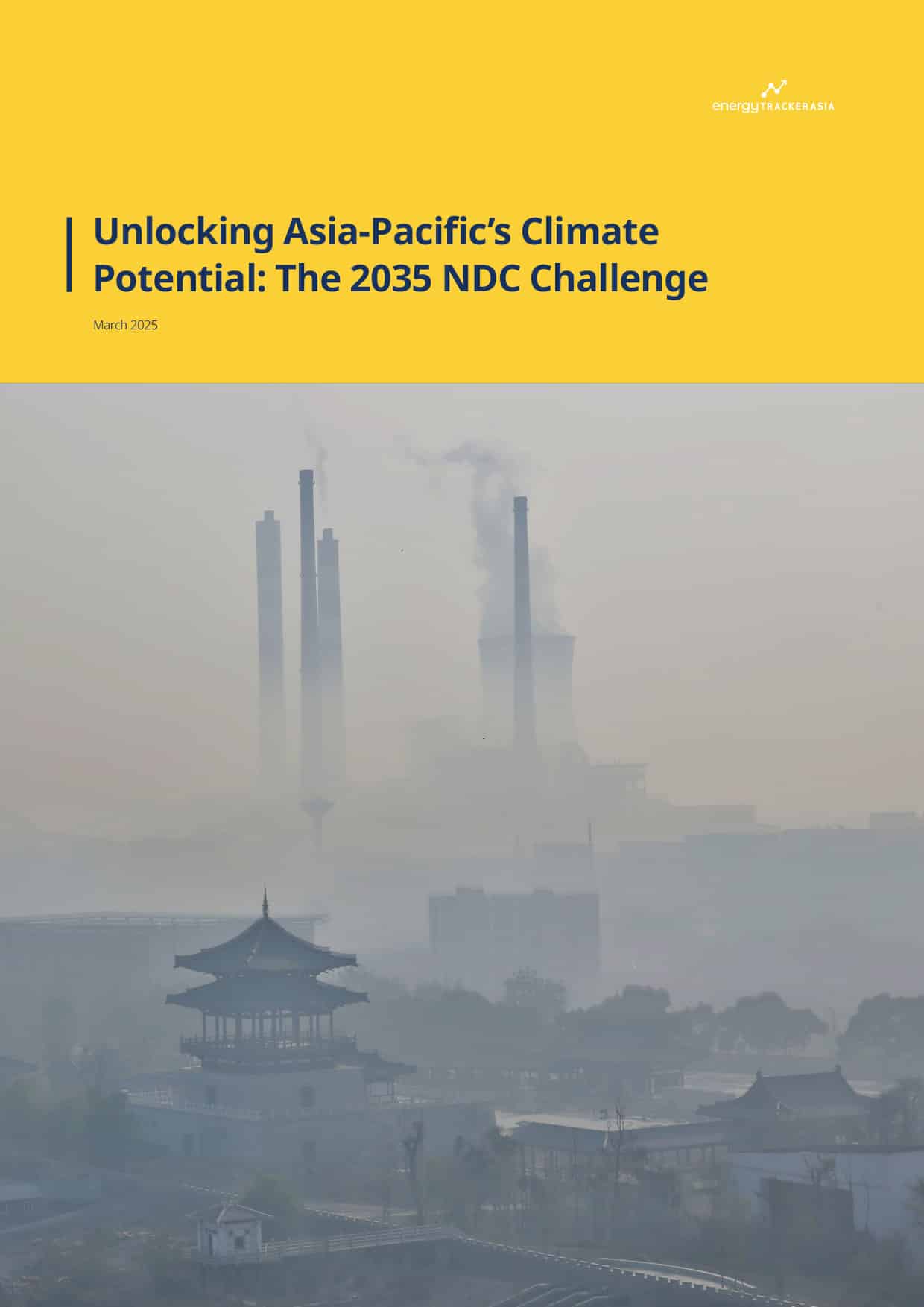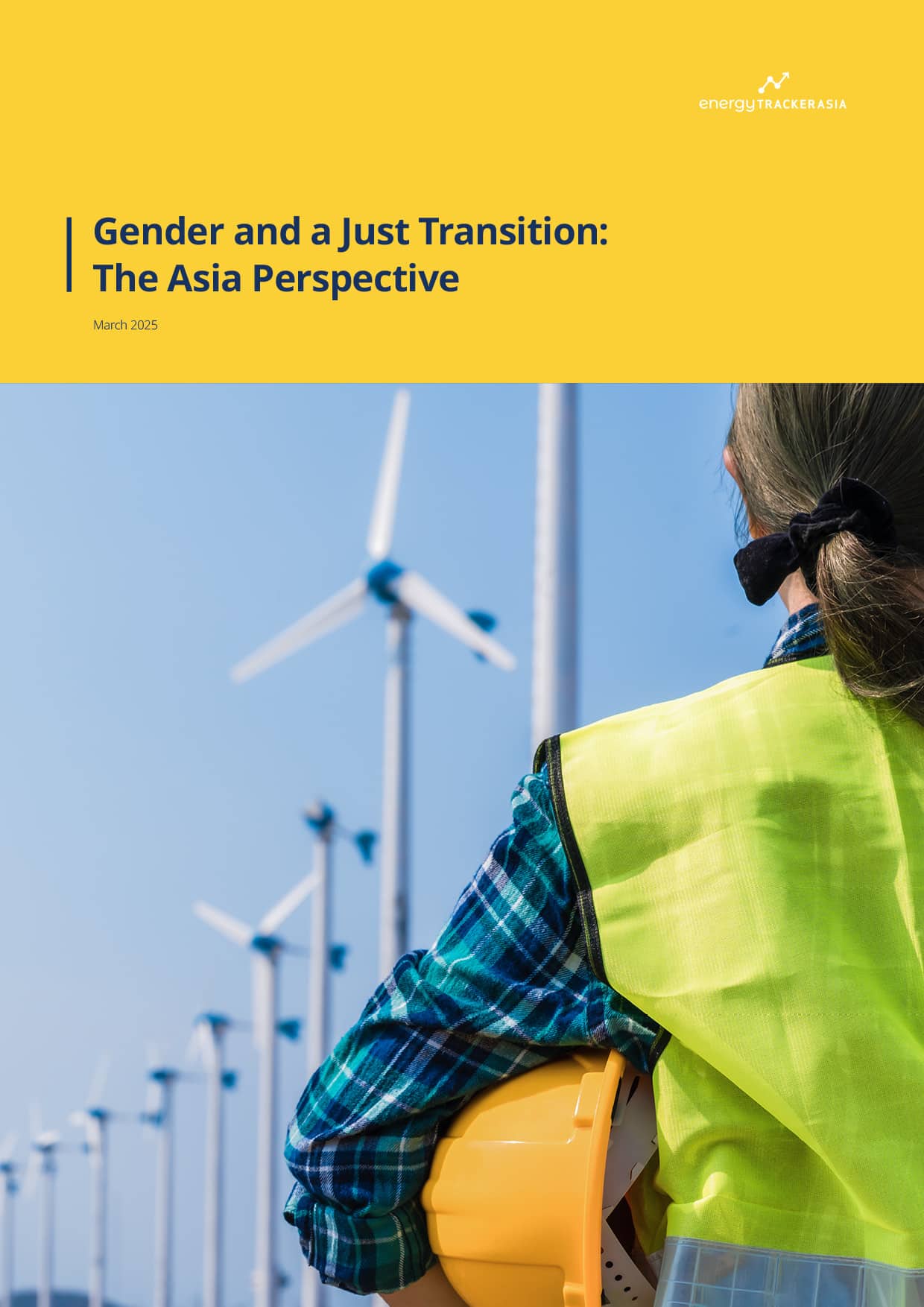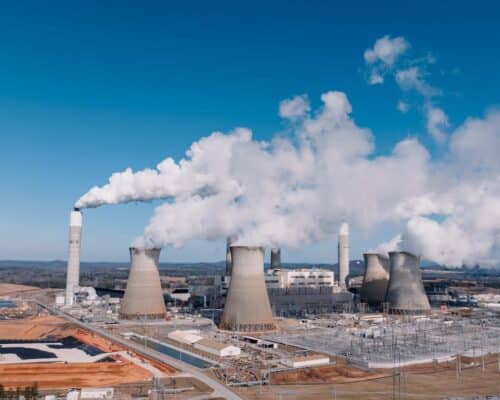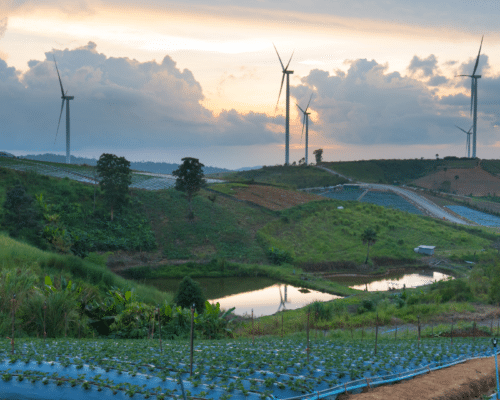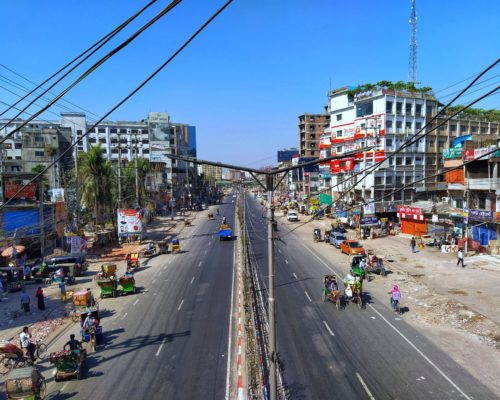Boom & Bust 2025 Report: New Coal Power the Lowest in 20 Years
22 April 2025 – by Viktor Tachev
The 10th edition of the “Boom and Bust Coal” report by Global Energy Monitor and partners reveals that in 2024, the world added the lowest amount of new coal power in 20 years. According to the authors, this indicates the continued decline of the most polluting fossil fuel. However, the report also reveals many discrepancies. While Europe and Southeast Asia are trying to wean their energy systems off coal, some of the biggest polluters, such as China, India and Indonesia, continue to expand their fleets. Without strong policy intervention, the growth trends across those economies risk further distancing the world from the goals of the Paris Agreement.
New Coal Power Additions Reach Their Lowest Levels in the Past Two Decades
The latest report by Global Energy Monitor, CREA and other co-author organisations reveals that the world added 44 GW of newly operating coal power in 2024 — the lowest in the past 20 years. Furthermore, it was around 30 GW lower than the annual average between 2004 and 2024, which stood at 72 GW.
While the additions marked a historical low, they still exceeded the 25.2 GW of retired capacity, resulting in an 18.8 GW net increase in global coal power.
However, excluding China, coal power capacity globally decreased by 9.2 GW, with retirements exceeding additions.
Europe marked a massive fourfold jump in coal plant retirements, with 11 GW, up from 2.7 GW in 2023. Germany decommissioned 6.7 GW, while the UK shut down its last coal power plant.
In total, coal power capacity under development outside of China and India dropped for the 10th consecutive year. Between 2015 and 2024, it declined by over 80% — from 445 GW to 80 GW.
While OECD countries also made progress, the researchers note that the coal retirements in the region need to triple to align with the Paris Agreement — from 19 GW in 2024 to 70 GW in 2030. These trends might get a boost by the fact that over 200 GW of that existing capacity exceeds 40 years of age, beyond the average global coal plant lifespan of 37 years.
Retirements in the US fell to 4.7 GW, the lowest level since 2014. GEM’s report warns that while nearly half of the remaining coal power capacity is scheduled for decommissioning by 2035, some utilities are actively delaying or withdrawing planned retirements.
These efforts align with the new administration’s priorities, which voiced climate change denialism and support for the fossil fuel industry. After quitting the Paris Agreement and pledging to revoke key environmental and climate laws and accelerate oil drilling, US President Trump also promised to revive the coal industry, reportedly telling an audience of members from coal-producing states never to use the word “coal” unless putting “beautiful, clean” before it.
“Last year was a harbinger of things to come for coal as the clean energy transition moves full speed ahead. But work is still needed to ensure coal power is phased out in line with the Paris climate agreement, particularly in the world’s wealthiest nations,” noted Christine Shearer, project Manager of Global Energy Monitor’s Global Coal Plant Tracker.
India and China Continue To Go Strong on Coal Power Development
China and India were the only countries where coal power capacity under development didn’t decline in 2024. They are part of a group of just 10 countries that account for 96% of coal power capacity development.
GEM finds that China recorded the highest year for new coal construction starts since 2015, with 94 GW of new capacity. The country is now home to 55% of the world’s coal power capacity and 69% of all global coal power capacity under development.
The analysts warn that without curtailment, the wave of new plants could undo President Xi’s pledge to limit coal consumption growth through 2025.
GEM’s report finds that Chinese companies are behind the proposed coal power capacity increases in African countries like Zimbabwe and Zambia. This comes despite the government’s pledge to stop supporting new coal plant development abroad from 2021.
The past year also saw record new coal plant proposals in India, with 38 GW. The Indian government has pledged to phase down coal use, but a concrete timeline is lacking. Furthermore, the ongoing coal expansion is likely to ensure that the use of the dirtiest fuel won’t peak before 2040 — the year that countries should phase out unabated coal power to meet the 1.5°C target of the Paris climate agreement, as per the IEA’s net zero scenario.
In total, China and India together accounted for 92% (107 out of 116 GW) of all new coal power plant proposals worldwide in 2024.
Japan and South Korea Prioritise Ammonia Co-firing as a Way to Continue Using Coal
The Boom & Bust Coal 2025 report warns that planned coal retirements in Japan and South Korea remain way off track with the Paris Agreement. Furthermore, by promoting ammonia co-firing at coal plants as an emissions reduction strategy, the two countries are trying to justify their ongoing coal use.
Both countries have also been promoting the use of the technology in coal plants all over Southeast Asia, as well as in Chile and South Africa.
However, experts have long criticised this strategy due to co-firing technologies being highly polluting, expensive and unproven. As a result, countries that invest in them risk failing to align with the Paris Agreement.
Momentum For Coal Power Is Slowing Down in South and Southeast Asia
The report’s authors find that Southeast Asia hasn’t proposed any new coal plants in 2024 except for Indonesia, with several countries actively advancing toward a managed exit from coal. New proposals have nosedived across the region, mainly due to phaseout pledges in Indonesia and Malaysia, a moratorium on coal plant permitting in the Philippines and the development of just transition planning in Vietnam.
Around 12 GW of capacity was shelved or cancelled in Southeast Asia in 2024. The situation is another indication of ASEAN nations’ willingness to move away from coal. However, in this transition, they have also demonstrated a strong interest in replacing coal with gas — another highly polluting and expensive fuel incompatible with the Paris Agreement goals. Ember finds that the ASEAN generated just 26% of its electricity from clean sources in 2024, below the global average of 40%. Only Laos and Vietnam surpassed the global average in the region, at 77% and 44%, respectively, due to their abundant hydropower.
Furthermore, while global solar generation doubled in three years to reach over 2,000 TWh of electricity in 2024, ASEAN’s share of solar electricity barely increased, rising from 3.1% in 2021 to 3.2% in 2024, despite the region’s vast solar potential. According to estimates, the ASEAN has over 30,000 GW and 1,300 GW of largely untapped solar and wind potential, respectively. Yet installed capacity remains low at only 26.6 GW for solar and 6.8 GW for wind.
While both Pakistan and Bangladesh remain in the top 15 countries for total coal capacity under development globally, the “Boom and Bust Coal” report concludes that their governments are struggling with coal-related debt issues and cross-border disputes. This has made power sector management more challenging and halted the pursuit of new proposals.
Focus on Indonesia and its Captive Coal
Indonesia is the world’s largest global thermal coal exporter, third-largest coal producer and sixth-biggest CO2 emitter, with its climate targets rated “critically insufficient” by Climate Action Tracker.
GEM’s report finds that Indonesia currently operates 130 coal-fired power plants with a capacity of 30 MW or more. Another 21 units are in pre-construction.
Furthermore, captive coal, a growing industry in Indonesia and a threat to its peak emissions target, as Energy Tracker Asia has previously reported, has more than tripled between 2019 and 2024 — from 5.5 to 16.6 GW. According to the report’s authors, Indonesia’s metal processing industries were the main reason for this growth.
In 2022, the country initiated a transition away from coal power and pledged to halt the deployment of new coal plants after 2022 while setting a 2050 national coal phaseout target. In late 2024, President Prabowo Subianto pledged massive renewables deployment and plans to end coal use by 2040, potentially achieving net-zero emissions by 2050.
However, the country still has exemptions to the 2022 moratorium, which applies to on-grid coal plants, part of its electricity supply plan, and captive coal plants supporting strategic activities and industries like metal processing.
Furthermore, the national plan aims to retrofit coal plants to run on ammonia and biomass rather than decommissioning them. The researchers warn that this, coupled with the captive coal growth and plans to utilise CCS technologies, risks further distancing Indonesia from its long-term climate targets.
“There’s a mismatch between Indonesia’s coal plans and climate pledges,” explains Lucy Hummer, senior researcher at Global Energy Monitor. “Indonesia’s climate commitments can only be realized with thoughtful policy decision-making, and the current proposed plans would likely do more harm than good — co-firing with biomass can drive deforestation, and CCS continues to be an unproven solution.”
In 2024, Indonesia is sending mixed signals about its decarbonisation ambitions. The climate envoy Hashim Djojohadikusumo said that the plans to shut down all coal plants by 2040 were “not true” and argued there wasn’t any transition away from coal occurring internationally, despite data showing the opposite. He also asked why his country should comply with the Paris Agreement given the US withdrawal, saying the treaty was no longer relevant. According to some experts, the downplaying of the Paris Agreement was heavily influenced by the government’s connections to the palm oil and coal industries.
Today, fossil fuel power plants represent 85% of Indonesia’s total energy mix, and the recently released National Electricity Plan for 2024–2060 outlines the addition of 26.7 GW of new coal plant capacity over the next seven years, of which 75% would consist of captive plants. However, the “Boom & Bust Coal” report is another testament to the importance of phasing coal out for Indonesia and its economy. The researchers warn that captive plants are at risk of following a similar path to the country’s on-grid plants that were built rapidly over the past decade, leading to overcapacity, costly long-term power purchase agreements and controversy.
“Three years after Indonesia’s JETP agreement, there has been no significant progress. The plan for early retirement of the coal plants is still just talk,” says Zakki Amali, research manager of Trend Asia. “While coal exploitation continues to rise, captive coal power plants grow without control, and new coal policies encourage religious organizations and small businesses to get involved in mining, which will trigger more severe environmental damage and global warming. With all these conditions, Indonesia is on the verge of failing to make an energy transition,” the expert warns.
At the same time, Ember estimates that solar and wind in the country remain underutilised at less than 1% — far below the global average of 15% and behind its ASEAN neighbours Thailand (5%), Cambodia (7%) and Vietnam (13%).
Coal’s Decline in Asia Crucial to Global Decarbonisation Efforts
The “Boom and Bust” report concludes that while the world continues to move away from coal, power plant retirements are lagging across the biggest emitters or where they matter most. Furthermore, the continued approval of new coal power plants will lock many economies in a future of high emissions since, in countries like India, for example, it takes 7-9 years on average between proposal and project completion.
As a result, the pace of retirements and project cancellations remains too slow to meet global climate goals, and the coal transition is off pace for aligning with the Paris Agreement.
The key to reversing the current trajectory lies in Asia. If China, India, Japan, South Korea and Indonesia follow the lead of the EU and Southeast Asia, the world’s chances to limit global warming to 1.5°C will get a significant boost. Doing so would require strong policy reforms that would tilt the nations’ energy systems toward clean power by limiting or ending new coal plant approvals and introducing detailed national roadmaps to retire coal-fired power plants.
by Viktor Tachev
Viktor has years of experience in financial markets and energy finance, working as a marketing consultant and content creator for leading institutions, NGOs, and tech startups. He is a regular contributor to knowledge hubs and magazines, tackling the latest trends in sustainability and green energy.
Read more